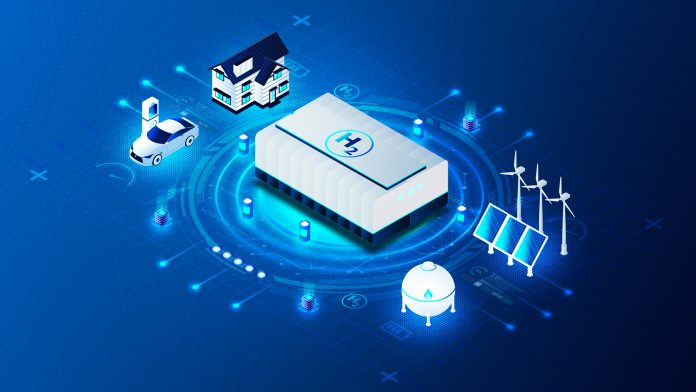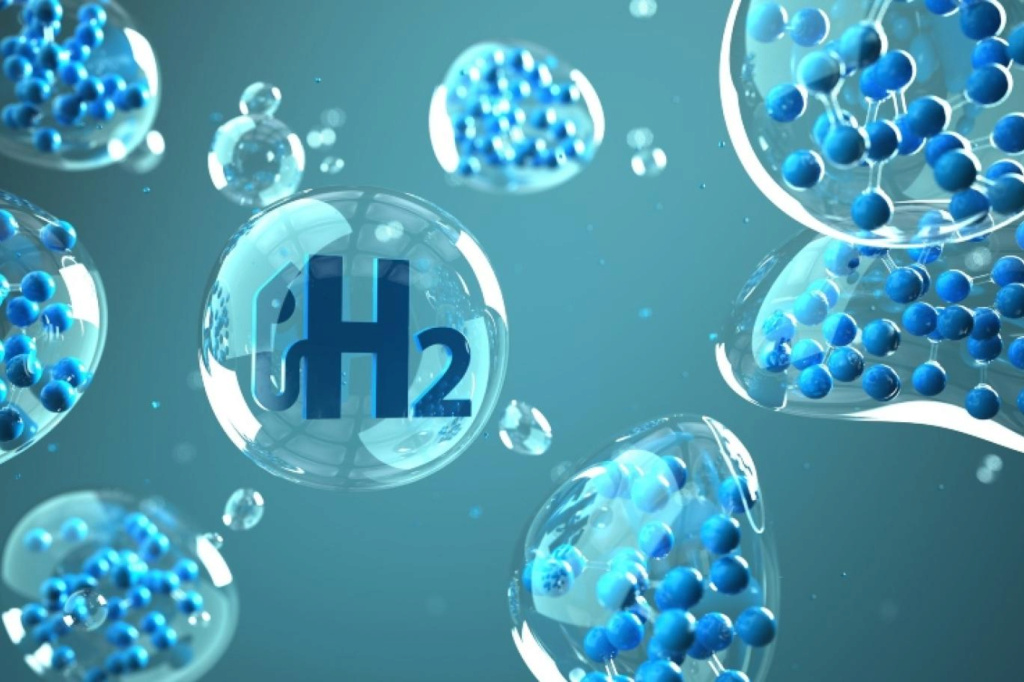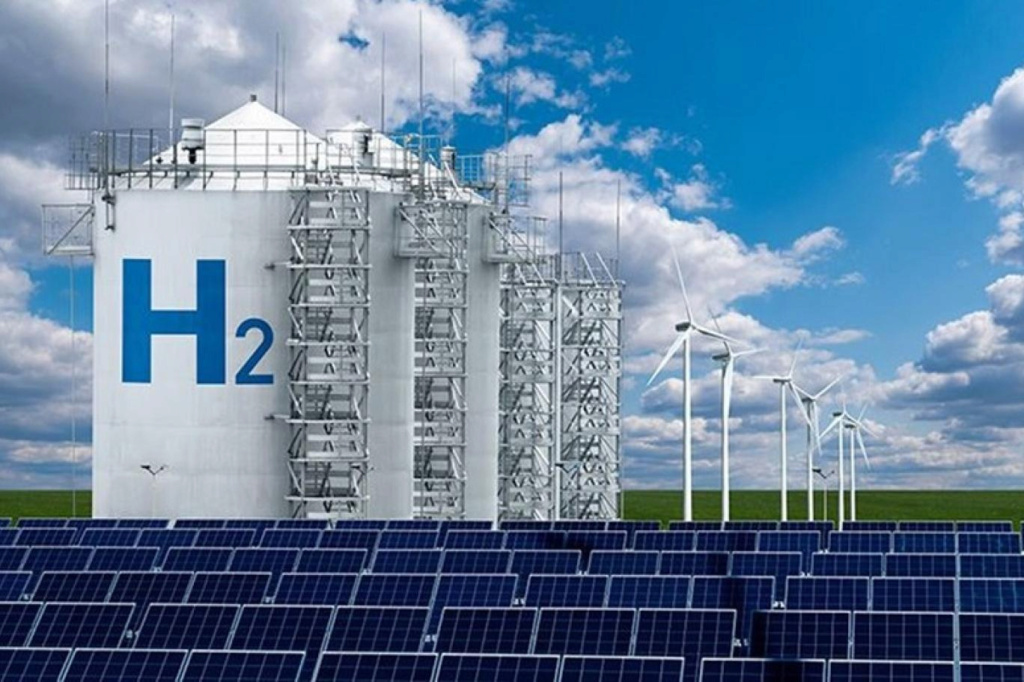The Earth is full of hydrogen and its energy could last for thousands of years

Hydrogen provides an abundant and pollution-free energy source (Innovation Network)
It takes the fuel cell industry to astronomical levels and changes the energy landscape
Hydrogen is available all over the Earth and in such large quantities that its supply ensures the provision of clean energy that will suffice humanity for a long time. Perhaps it is a small scientific news, but it may constitute a major turning point in the energy landscape throughout the globe! The news relates to a discovery that proves a saying that energy scientists have had for a long time regarding the availability of hydrogen gas in places spread over the entire globe.
According to the American Association for the Advancement of Sciences website, in October 2022, the US Geological Survey Center of the Department of Energy presented a digital model filled with artificial intelligence showing that the land contains sufficient quantities of hydrogen to continue. At the current level of hydrogen consumption for thousands of years. According to that computerized model, there are interactions between rocks and water that take place in the depths of water bodies and produce hydrogen continuously. This hydrogen collects in places on land that receive leaks, such as dry wells and abandoned mines.
And by extension, that model was based on the work of a small and tireless group of scientists who worked on developing a discovery made in 2012 of finding pure natural hydrogen in a dry well 108 meters deep in a village in the African country of Mali. This happened during drilling work for Chapman Petroleum Engineering. After delving into the field situation in which natural hydrogen appeared in a well in Mali, similar discoveries were repeated in Brazil, Australia and the United States. In a significant development, Natural Hydrogen Energy completed the first hydrogen crater in Nebraska. And in 2022, the American Association of Petroleum Geologists formed its first committees specializing in natural hydrogen.
An amazing diffusion of the "heart" of energy in the gas
The above words stress the two words hydrogen and diffusion.
Let's start with the second. It indicates that natural hydrogen gas is available in stores and bunkers in all countries, unlike oil, for example, which is concentrated in certain places.
Back to the first magic word, hydrogen. This substance constitutes the heart of natural gas, which has become popular to say that it is heading to occupy the forefront of the energy scene during the coming decades. Rather, the present time is described as the era of transition to gas energy, with “accompanying” from clean energy sources such as those coming from wind, sun, hydroelectric dams, and others . . Nuclear energy is a fierce competitor and the subject of countless disputes, noting that any scientific breakthrough in that field, especially nuclear fusion, would move all energy discussions to qualitatively different levels.
So, back to natural gas. It is much less polluting than oil, and immeasurably less polluting than the coal that the Ukraine war brought back to the energy scene in an unexpected way.
On the other hand, hydrogen provides completely clean energy. Hydrogen does not stand at odds with natural gas because the composition of the latter contains a lot of hydrogen.
From a scientific point of view, hydrogen "burns" and gives huge energy, and theoretically only water consisting of oxygen and hydrogen is produced from it. So hydrogen energy is pretty clean, at least in theory. Consider natural gas. Its composition consists mainly of methane, which is four-fifths hydrogen and one-fifth carbon. So, the energy heart of natural gas is mainly hydrogen. The same applies to the different forms of gas, all of which have names beginning with hydrogen, such as green, blue , gray, and so on.

Hydrogen powers fuel cells, which are clean and cheap energy and do not require central grids of electricity (hydrogen forum)
In prominent details about the energy of hydrogen, it is indicated that every three liters of it produces an amount of energy equal to what it gives a liter of gasoline. Perhaps this illustrates an important problem in the issue of leaving oil fuels represented in the fact that the high concentration of energy in it and the ease of dealing with it under normal living conditions raise the standard of challenge facing oil alternatives.
For example, the current production of “OPEC +” countries is estimated at about 30 million barrels per day, and this is equivalent to about 90 million barrels per day in hydrogen energy.
Each liter of water gives a quart of hydrogen. This means that OPEC's oil production needs about 360 million barrels of water per day. This indicates another challenge facing oil alternatives, as water is less important than energy to be spent on extracting hydrogen energy!
Hydrogen gas is also used as an energy source in industry, such as storing it in flasks to be used for hot welding of metals, as it is compressed with a force of 250 bars (each bar is equal to the force of atmospheric pressure).
Hydrogen is also used as liquid in missiles, vehicles and some aircraft to be a direct source of energy, but it needs to be kept at a temperature of minus 254 degrees Celsius. And again, it is one of the salient challenges in the issue of alternative energy. In general, the space sector and ballistic missiles, for example, depend on hydrogen, as it uses a liquid to propel long-range ballistic missiles, including intercontinental missiles.
An overview of fuel cells and their relationship to hydrogen
Hydrogen gas is the simplest and lightest substance in nature.
The hydrogen atom consists of a single electron, which orbits a nucleus with a single proton and a single neutron as well. An electron carries a negative electrical signal, while a proton carries a positive electrical signal. The neutron does not carry an electrical signal, so it is considered "neutral".
As a reminder, hydrogen gas, and its symbol H2, was discovered by the Englishman Charles Cavendish (1766) and the Frenchman Antoine Lavoisier (1783).

Water in its pure chemical form consists of two hydrogen atoms combined with an oxygen atom. When an electric current passes through it, the water decomposes into hydrogen and oxygen.
In retrospect, the theoretical foundations of fuel cells were laid down by the German scientist William Groff (1811-1896).
The main principle of fuel cells is to "reverse" the process of electrolysis of water. Instead of the electric current working to separate the oxygen from the hydrogen, a special membrane works to capture the hydrogen protons [let us note that hydrogen becomes electrified after giving up the only electron in it, acting as a proton], and mixes them with oxygen atoms to generate energy with water. The membrane is called "proton exchange membrane" and translated "proton exchange membrane". In other words, fuel cells convert hydrogen into electricity and heat.
It is possible to classify fuel cells according to the source of hydrogen they consume into two types. The first is the cells that use fuels saturated with hydrogen, especially gasoline (from petroleum) and methanol (from natural gas). The second is embodied in cells that use hydrogen directly, as if it comes to them through advanced “Hydriade” bottles that are made of a mixture of titanium and copper. [A reminder of the importance of rare metals in the fuel cell industry]. The proton exchange membrane gives fuel cells the ability to generate large amounts of electricity for a long time.
With the discovery that natural hydrogen is available in all parts of the land, many energy experts expect the fuel cell industry to renew its activity, and may even spread at a dizzying astronomical speed, becoming a primary source of electricity in homes, cars, and even factories. It goes without saying that the realization of this image of proliferation, which is still a technical conception, will radically change the landscape of electricity and energy, as homes, residences, buildings and facilities will be available to be a source of electricity, and it may be able to feed the electricity networks as well, but it may also induce a change in the concept of networks, their logistics and their economies.
So, does the discovery of the wide spread of natural hydrogen put us in front of a multidimensional turning point in the energy landscape, or will other data appear that radically changes that same bet? Let's wait and see.
Source : websites

